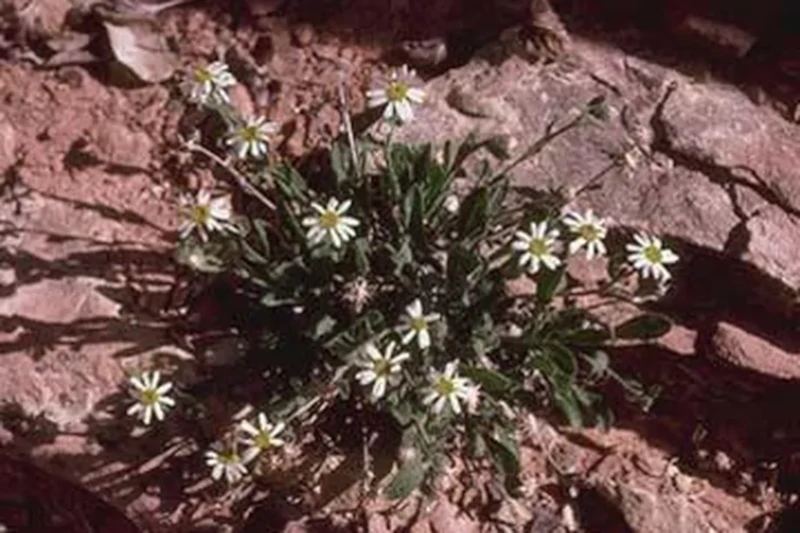
Maguire Daisy Facts
- Perhaps most notably the truly lovely Maguire Daisy represents a plant species with a unique status, for two separate reasons. However, this marvelous plant also goes by the alternate common name of the Maguire’s fleabane. Among professional researchers, however, it’s also known as the Erigeron Maguirei. But, by either name, it represents a lovely plant with a surprising history.
- Further, this statement holds true due to the fact that, in the year 1987, a surprising accident occurred. That’s because, at that time, the species officially received a listing as an Endangered Species. This happened because, at that time, only 7 known individual specimens of the remarkable plant appeared to exist. However, experts later realized two startling facts.
- Firstly, these specimens actually formed a separate variety of the plant. Secondly, it now appears that more than 160,000 individual plants currently exist. As a result, it does not yet appear on the IUCN Red List. Nevertheless, due to a combination of factors, it must be considered to be at some risk. Although habitat loss also threatens it, its greatest threat likely comes from climate change.
Related Articles
Maguire Daisy Physical Description
The magnificent Maguire Daisy boasts several distinctive physical characteristics to draw the attention of those who appreciate Nature. For one, the lovely plant constitutes a small perennial. For another, it also evolved as herbaceous in nature. To the great surprise of many, it also has a close relationship to the aster family.
Furthermore, the base of this impressive plant has a relatively woody and highly branched nature. Nonetheless, this diminutive, but beautiful, plant doesn’t grow large. That’s because it attains an average height of approximately 11 in (28 cm). Fortunately, they have the capability of reproducing from either its taproot or a caudex.
Also, both the numerous stems and the small, narrow leaves of the Maguire Daisy develop covered in dense hair-like structures. Further, each specimen produces 1-5 flower heads. In turn, each of these produces as many as 20 small blooms. Not surprisingly, these display the yellow center and surrounding white petals typical of most daisies.
- Kingdom: Plantae
- Phylum: Angiosperms
- Class: Eudicots
- Order: Asterales
- Family: Asteraceae
- Genus: Erigeron
- Species: E. maguirei
Maguire Daisy Distribution, Habitat, and Status
Quite unfortunately, the Maguire Daisy appears to only exist in two locations. Further, these reside in the state of Utah, in the United States, in North America. Fortunately, however, the majority of the known specimens currently reside within the borders of the Capitol Reef National Park. Since this constitutes federally protected land, this provides them with at least a certain measure of protection.
Sadly, though, its known population also remains highly localized, therefore rendering it quite vulnerable. In point of fact, all known specimens grow in only ten known concentrations. Further, it also has very specific habitat requirements, which also limit its possibilities. That holds true due to the fact that it only thrives in most unusual locations. These consist of various mesas, washes, and canyons.
But, even within these, the Maguire Daisy prefers small, specific sections. That’s because its principal habitat consists of pine and juniper woodland, and also areas of shrubland, within the canyons, washes, and mesas. Despite its numbers, the minimal distribution forms a concern. A single natural disaster could seriously threaten the species. For that reason, the U.S. Fish and Wildlife Service lists the plant as Threatened.
Species Sharing Its Range
Check out our other articles on 6 Mysterious Natural Phenomena, Yellow-Eyed Penguin, Gorges du Tarn, Dawn Redwood, Clymene Dolphin, Vietnamese Mossy Frog, Puffin, Green Iguana
